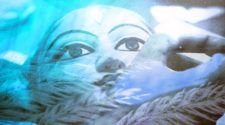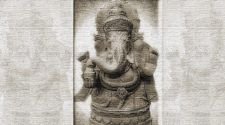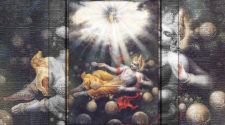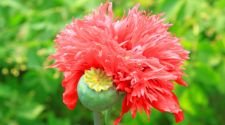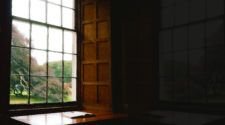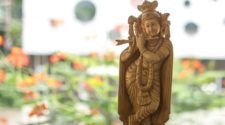The Breakdown
Pros
Cons
Introduction: None of us could ever forget a face that we had seen at a city named ‘Kolkata’, in our childhood. It’s the face of a toy-seller who used to appear in front of our apartment once every month. The thin fellow carrying a bag full of toys and a smile on his face, had become a symbol of joy and astonishment to us little enthusiasts, who were forbidden to frequently interact with strangers, fortunate enough to be walking down the street, outside the premises of the apartment, specified by our guardians as ‘inaccessible to us’.
The toy seller had a variety of toys and decorative creative in his collection. All of them were either carved on wood, shaped out of bands of thin strips of bamboo or a combination of the two. There were depictions of Gods and Goddesses, representations of great and wise men of the past, demonstrations of local traditions, exemplification of domestic or wild animals and abstract arts that illustrated certain social issues that we, as children, were clueless about. They were mere toys for us. However, the mere toys, taught us a lot about various aspects of life, without even have ever taught them. Here, we would try to re-visit the present situation of the very same art form, with a very brief history of how it evolved as an art form in its journey through ancient India, a major part of which, was through the eastern region of the country.
Account of the Indian context: The very age of the art and craft of wood carving in India, cannot be determined. Use of wood in sculptures has its mention in ancient texts like Rig Veda, Matsya Purana, Brihaddharma Purana, Brahmavaivarta Purana, Devi Purana, Samba Purana, Bhavisya Purana, Manasara Silpasastra, Hayasirsa Panncaratrama, Vrhat Samhita (Varahamihir), Vishnudharmottaram, Viswakarma Prakasa, Rajaballabhava, Purusottam Samhita (Pancarata Vaishnav Text), and Sukrantisara, along with an epigraph of Abhira Vasudeva, found in Nagarjuniconda, Andhra Pradesh, and dated c. AD 278 describing an eight armed wooden sculpture of Lord Vishnu called ‘Astabhujaswami’, as a concrete evidence of the employment of the art-form in ancient India. The earliest of this genre is a freestanding wooden figure of Tara, the Buddhist Goddess (c 9-10 cent AD). It was discovered by late Dr Moreshwar Dikshit, from the debris of cave 31 at Kanheri, near Mumbai, It is considered to be brought from the eastern region of India (either Bihar or Bengal) and considered to be from the Pala-era. Unfortunately, the present location of this rare specimen is unknown. The only remaining evidence is its photograph that was been published in Marg.
There are textual references of the famous ‘Pigeon Monastery’ in Magadh, mentioned by none other than Huen Tsang himself. There are material specimens at Himachal Pradesh dated between c 8-11 centuries AD like Laksana Devi Temple at Bharmaur in Chamba district (c 8 cent AD), Sakti Devi Temple at Chattrari (c 8 cent AD) and Mrikula Devi Temple in Lahaul (c 11 cent AD). Apart from it, there are three specimens of Wood Carving discovered from Chandraketugarh, West Bengal, said to have been crafted, applying the Maurya or Sunga styling of wooden architecture. These are three wooden dolls, a male, a female, and a fish considered to be one of the earliest material specimens of wood-carving in India, and now kept in State Archaeological Museum, Kolkata.
However, due to the perishable nature of the wood used in these sculptures, combined with the hot and humid climate of India, most of such wooden sculptures were unable to sustain the craft’s material presence. The oldest known wooden creative in the world dates back 11,500 years (Shigir Idol), and the longest surviving wooden carving dates back to 2500 BCE (Sheikh el-Beled). On the contrary, surviving wood carvings in India, date back to somewhere between 322 to 344 BCE (Mauryan Period). These surviving artifacts are nothing but our clues pointing towards its journey that resulted in the formation of a new school of sculptures in the later part of the medieval period in Indian history, the references of which can be seen in the works of Taranatha (Tibetan Monk who studied the History of Buddhism in India), who has mentioned about two highly skilled artists of the Naga tradition, Dhiman and his son Bitpalo, who used to practice various techniques like metal casting, engraving and painting. According to him, the reign of Dharmapal (c 783-818 AD) and Devapal (c 818-858 AD), played a crucial role in the development of these new found schools of craftsmanship based on the already set up platform that prevailed in Bengal during 9-13 century AD. The tradition established itself to such an extent, that it left its indomitable influence all the way up till the 20th century AD. Facts that have also been supported by scholars like Rakhal Das Banerji.
How the craft evolved in India:
a) Indus Valley Civilization – Archaeologists may not have found any surviving specimens of wood carving from the ancient civilization, but they are sanguine over the fact that wood based art played a crucial role in Harappan architecture. The roofs of their houses were made up of wood, reed and mud. The upper stories of their houses were also made up of wooden structures, that stood on wooden beams. Why we could be assured of the fact that the history of the art of wood carving in India, dates back well beyond the earliest specimens surviving in the world.
b) The Vedic Period – Unfortunately there are no surviving proofs of wood carvings of this period as well. Thankfully, there are documentations of it passed on from one to the next generation. For instance there are references in Rig veda pointing towards the aesthetic importance of wood crafting during this period. Such as the ones mentioned in ‘Hymns of Rigveda’.
Examples include…
“…May we ascend the ship that bears us safely, whereby we may pass over all misfortune.” (Book VIII, hymn 42.3)
“Loud neighs the Tawny Steed when started, settling deep in the wooden vessel while they cleanse him.” (Book IX, hymn 95.1 )
“What was the tree, what wood in sooth produced it from which they fashioned out the earth and heaven?” (Book X, hymn 32.7 & 81,4)
Wood, during this period, therefore, was a prime material of architecture, beside metal and clay.
c) Age of Saints – The period of Buddha and Mahavir (6-5 century BC), in a very similar way, eluded us of any material specimen of wood-carving during its time. However the texts rule in favor of its existence in the era. There’s the story of a sandalwood image of Mahavir himself that was said to have been carved during his lifetime and a wooden creative of Yaksha Moggarapani in a shrine outside Rajagriha (Rajgir). There is a long list of wooden articles mentioned in Cullavaggal Chullavagal Kullavagga (Shastha Khandaka) of the Vinaya Pitaka of the Tripitaka, that Gautama Buddha is said to have allotted for Bhikhus to be used for themselves. ‘Purna’ is said to have built a sandalwood monastery, that was said to have been visited by Gautama Buddha himself. So, there are more than enough references of wood based art prevailing during this period.
d) The Mauryan Empire (c 322-184 BC) – Finally we have approached the era, that offered us a glimpse into material evidences of its time, beside the literary mentions of wood based art. Indian Museum Kolkata is said to have the fragments of wooden buildings of Mauryan sites like Bulandibagh Kumrahar in Patna as mentioned by Kalyan Kumar Dasgupta. Twenty Six wooden pillars were also found at Vairat (Rajasthan), and there are chambers for the Ajivikas, built by Ashoka (c 274-237 BC), replicating the traditional roof and thatch construction style of eastern India (along with the 84000 Stupas). Lomas Rishi (c 3 century BC) and Sudama caves are ideal examples of the influence of the art of the eastern India, during that time period. The influence that had lasted in its glory till the time of Mughal Emperor Akbar himself.
There are texts of Greek traveler Megasthenes, mentioning of the wooden imperial residence of Chandragupta Maurya (c 322-298 BC) at Palibothra (Pataliputra or Patna), confirming that entire cities and surrounding walls were used to be made up of wood, during his reign. Moreover, most Indian architectural stone monuments like Sanchi Stupa (c 2-1 cent BC), Amaravati (c 2 cent BC), Bharhut (c 2 cent BC) and Bhaja (c mid 2 cent BC) are transformations of their original wooden versions where wood carving had acted as the blue print and the base technology of the outcome that we may witness now. The tradition of the ‘Stupa’ style of art, along with many of its attributes, is said to have eventually passed on to ‘Chaitya Architecture’ of Andhra Pradesh.
Specializations of the eastern region of the country: Most of the influential wood artisans during the various eras, we have the material proofs of, had come from the eastern region of the country and these groups were said to have the highest level of expertise on wood, stone, bamboo and ivory craftsmanship. Assam has been famous for its Teak crafts (namghar or place of worship, large mythic figures, deities etc), Bihar for Teak, Palm and Ebony crafts (carved panels and pillars, doors and brackets, images of ‘Vir Kuar furniture, palanquin, daily accessories, boxes etc), Manipur once again for Teak (tarkashi or metal-thread work on furniture, kharam or slippers and boxes etc), Odisha for Neem and Teak crafts (raths, idol of deities especially the Jagannath-triad, masks etc) and Nagaland for Teak crafts (statues, commemorative pillars etc).
Bengal had its share of significance as well. Through the eyes of learned Shri. Kalyan Kumar Dasgupta – With the help of chisel and hammer/mallet, the anonymous artists and craftsmen of Bengal have left adequate evidences, advocating in favour of their rich imagination and innovative ideas, along with the delightful pleasure of aesthetic expression. They can be classified into sections like Gods and Goddesses of the Brahmanic, Buddhist, Jaina and other pantheons, the deified mortals like Chaitanya Mahaprabhu and his associates along with all their attributes; ordinary men and women, with their every possible actions and attitudes along with the day-to-day accessories including furniture and other household articles; animals, birds, reptiles and mythic creatures; floral, geometric and other motifs. However, in Bengal woodcarving, just like its counterparts in stone and terracotta, it is the human figure that happens to be the most dominant and recurrent motif. Even the divine images here are more human than divine and the human effigies aglow with divine connotation. Hence, men and women from all walks of life assemble here spontaneously and appear in a variety of moods, gestures, actions and attitudes. Even, of course in the works of 18-19 centuries, the Europeans are also found in this pleasant togetherness of wooden manifestations.
An image of one of the carved plasters of the rath of Jagannath from Mahishadal, East Medinipur, West Bengal (early/mid 19th cent), as in Victoria and Albert Museum, London, can be found in the famous book of Kalyan Kumar Dasgupta, ‘Wood Carvings of Eastern India’.

Representational image and contemporary art
Other archaeological evidences of different eras found in West Bengal and Bangladesh:
a) Pillar capital of Sonarang (c 9-10/12-13 cent AD) measuring 4’4” x 1’3” x 1’5”, carved in high relief from a solid block of wood was presented to Bangladesh National Museum by Babu Ratnesvar Sen. It is said to have remained submerged in a water tank for centuries till it was found. However in a fragile condition, the carving is said to have remained intact.
b) Four valuable specimens were found near Sanbari, District Vikrampur, Bangladesh. A broken half of a pillar, a sculpture, a pedestal and a carved piece of wood (c 10-12 cent AD).
c) Surasundari (c 11/12 cent AD) is the carved form of a woman standing in a rhythmic posture, with eyes half shut in meditation, holding a parrot in her right hand. It was recovered from north Kaji Kasba of Munshigunj, Dhaka.
d) Carved quadrangular wooden pillars (c 11/12/12-13 cent AD), with only one side not been carved were found in Rampal tank of Munshigunj Dhaka.They are preserved by the Bangladesh National Museum.
e) A Jataka story sculpture (13 cent AD) was mentioned in Brihat Banga by Dinesh Chandra Sen to have been found at the Bengal Tibet Border. However, other than a pictorial evidence, the actual relic was never again located or to be found.
f) Fragments of a pillar were said to be found from Satksira of Khulna, Bangladesh (c 14-15 cent AD) that is said to have been a part of a temple once.
g) A pillar (16 cent AD) was retrieved from Bari Dargah, Pandua, West Bengal, with floral and geometric designs.
The 17th century carvings that have been preserved, include –
a) Devi fighting with demons, Goddess Kali fights demons and Krishna Lila to be found at Ashutosh Museum, Kolkata.
b) Vaishnav Vaishnavi, Khanjaniwali, Dasavtar Panel and Mother and Child to be found at State Museum of Tripura, Agartala.
c) Simhasan at Shyamchand Temple at Santipur, Nadia.
With the help of chisel and hammer/mallet, the anonymous artists and craftsmen of Bengal have left adequate evidences, advocating in favour of their rich imagination and innovative ideas, along with the delightful pleasure of aesthetic expression.
Legacy and contemporary wood and bamboo based crafts of Bengal: As was the case in the ancient eras, some of the highest level wood-carving craftsmen of Bengal had might as well possessed expertise in stone and ivory based craftsmanship.
However, since the time ivory has been banned as a trade practice in India due to the illegal poaching of endangered species of animals and since supply of quality stones (like the ones from Susunia hills) faced the same sort of a fate resulting in a rise in prices of raw material, more craftsmen had to look towards ‘wood’ as prospect raw material to be used for carving.

Representational file image – Prior to the banning of Ivory, an idol of Lord Krishna
Wood-Carving artists of Bengal who are capable of investing enough, mostly use Teak (Segun), Rosewood (Sheesham), Sandal Wood, Beechwood (Gamhar), Mango Wood etc for carving purposes. Malda and Bardhaman (Nantugram style – Gouranga, Krishna, Bor-Bou, Gour-Nitai, owl, etc) are the most famous regions of commercial wood-carving products in Bengal. Even today, most of the wood carving and bamboo-craft works are done manually and the use of machinery other than the basic tools is pretty much discouraged by the tradition oriented group of artists. The end products though are not identical are said to add to the outcome, a human touch, that is appreciated by the learned patrons of the crafts.

File image of contemporary art – Wood Carving
On the other side, though not as glorious (to the artists) as the trade of wood-carving, bamboo being an inexpensive alternative for craftsmanship, had dragged a good portion of skilled craftsmen towards itself. Craftsmen in this genre practically had the advantage of a lower working capital. Something that has also made it a craft that’s easily accessible to the artisans and the folk.

File image of contemporary art – Crafts on Bamboo
The West Bengal Govt has inducted the Biswa Bangla initiative, which has become a ray of hope for the craftsmen who are in real terms less demanding with monetary gains and more concerned about the future of the art forms. Rather than chasing higher level profits, most craftsmen attached to such crafts are more eager to win recognition at a national level and represent the nation at an international level, in order for the art form to spread accordingly. On the other side of the framework, they expect support on a larger scale, from e-commerce companies like Amazon, Flipkart and Snapdeal, operating in India and abroad. The extent of such possibilities is something that would depend of the demand of such products at the national and the international level.
We hope for the best because certain aspects of the crafts still astound its patrons in a very similar way that it did in the ancient eras of the country.
The very same way as the toy-seller’s wooden toys astounded us during our childhood. A joyous fellow and his bag full of surprises… None of us could ever forget his face.
To Access A Related Video : Please Click Here
Featured image courtesy: pxhere.com




